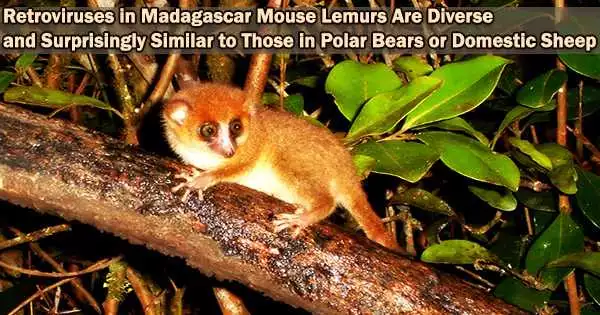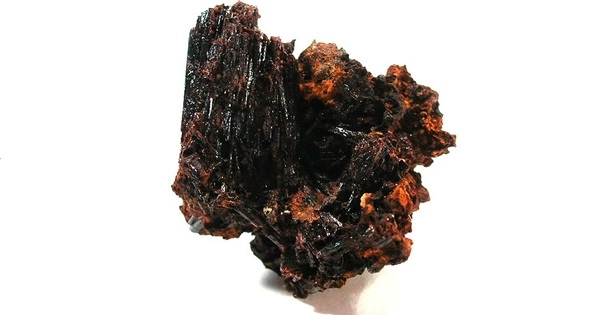A huge variety of indigenous species, including several lemur species, especially the mouse lemurs, make up Madagascar’s distinctive biodiversity. This diversity is also found in their retroviruses, a team led by scientists from the Leibniz Institute of Zoo and Wildlife Research (Leibniz-IZW) and the University of Stirling reports in the journal “Virus Evolution.” They examined the genome of the mouse lemur and discovered two groups of viruses that indicate early infections of the mouse lemur germline.
Now that the viruses exhibit characteristics similar to lemur genes, they are known as endogenous retroviruses (ERVs). The striking resemblance of some of the detected retroviruses to viruses found in other, quite different species, such polar bears or domestic sheep, surprised researchers. This reveals a fascinating and intricate pattern of retrovirus host switching that is far more intricate than previously believed.
The scientists used high throughput sequencing to test blood samples from four different species of Malagasy mouse lemurs for their analysis. The researchers discovered two gamma and three beta retrovirus sequences in the genomes of the lemurs, which they believe to be traces of early infections of the mouse lemur germlines. Since then, the host genomes have integrated the virus DNA, rendering the viruses inactive and contagious.
“We were surprised to find that one of the two identified gamma retroviruses was related to an ERV described in polar bears,” states Dr. Sharon Kessler, a German Academic Exchange Service (DAAD) supported scientist and Assistant Professor at the University of Stirling.
This suggests that JSRV-like viruses have been more widespread among mammals and are considerably older than previously thought. Why they only show up in such disparate species and in such a punctuated way is curious.
Professor Alex Greenwood
In terms of evolution, the lemur virus is old whereas the polar bear virus is new. “How these related viruses infected such geographically separated species is unclear,” Kessler says.
There were further surprises among the beta retroviruses. A virulent retrovirus that infects domestic sheep called Jaagsiekte sheep retrovirus (JSRV), which also forms ERVs in domestic sheep, is thought to be a virus confined to domestic sheep, goats and their relatives the first cloned sheep “Dolly” had to be euthanised after a JSRV infection and subsequent illness. The mouse lemurs have a closely related JSRV-like virus in their genome.
“This suggests that JSRV-like viruses have been more widespread among mammals and are considerably older than previously thought. Why they only show up in such disparate species and in such a punctuated way is curious,” says Prof Alex Greenwood, head of the Leibniz-IZW Department of Wildlife Diseases, where the sample screening was conducted.
Similar to retroviruses reported in marsupials, vampire bats, and squirrel monkeys, the team also discovered a virus in mouse lemurs.
“This group of viruses is becoming more interesting over time as more and more examples of similar viruses are being found in many places including very young ones that may still have currently infectious exogenous counterparts in nature,” says Greenwood.
Since non-primate viruses are linked to a large portion of the mouse lemur retroviral variety, this suggests a complicated pattern of viral host switching around the time the ancestors of lemurs arrived in Madagascar. The convoluted history of retroviral transmission among mammals will be made clearer with the aid of additional research on viral variety.
Dr. Kessler and Prof Greenwood collaborated with Prof Solofonirina Rasoloharijaona of the University of Mahajanga, (Madagascar), Prof Ute Radespiel of the University of Veterinary Medicine Hannover, Foundation, (Germany) and Dr. Kyriakos Tsangaras of the University of Nicosia (Cyprus) in this scientific investigation that was also made possible with funding from the American Association of Physical Anthropologists.
Retroviruses are types of viruses that spread through the integration of their genetic material into the genome of a host cell. The retrovirus may then be transmitted as a “endogenous” retrovirus and propagate across a population as a component of the host genome if the infected cell is a germ cell.
Endogenous retroviruses are now common in mammalian genomes and can occasionally account for sizable sections of the host genome as a result of repeated infections. The majority of retrovirus integrations, however, are extremely ancient and already deteriorated, rendering them inactive and having had their original impact on host health diminished by millions of years of evolution.
















